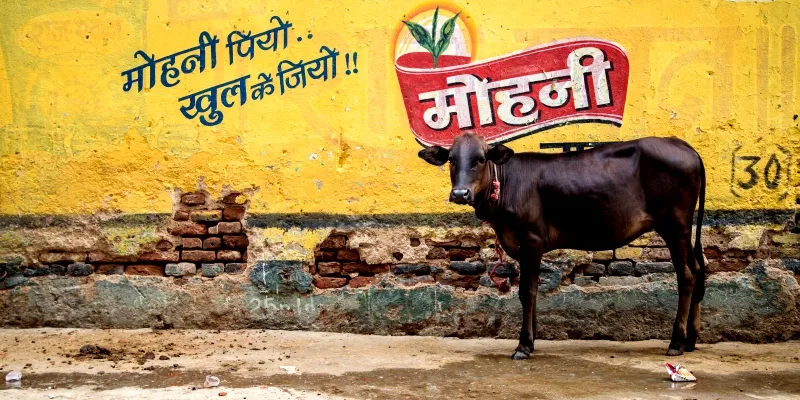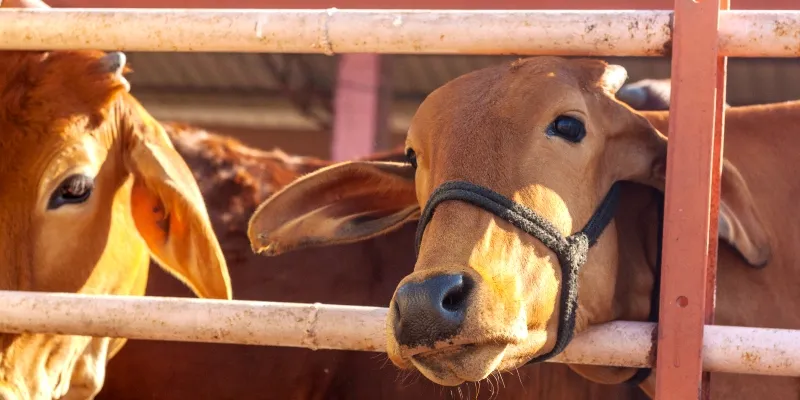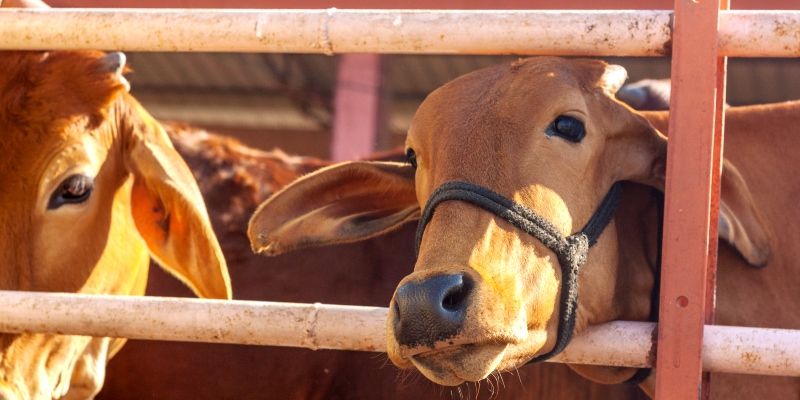To beef or not to beef, that is the question
I spent most of my childhood in Delhi, drinking buffalo milk coffee in the morning and eating buffalo curd rice at night. The milkman would arrive at the crack of dawn and dole out three frothing ladles of milk into the waiting stainless steel vessel, making sure to add a quarter ladle at the end to compensate for any shortcomings in the first three. My day began with a cup of fresh milk coffee with one spoon of sugar, combining North and South India in a delicious mixture.
I say that with some nostalgia since I have been vegan for most of the last decade, denying myself milk and eggs on top of the vegetarianism that I inherited from my family. In our debates about the communal and caste origins of meat consumption in India, we forget the animal that’s at the centre of these debates. Whatever else one might believe, there’s no doubt about the misery imposed on animals who provide us milk and meat. So you might think I would support a ban on the consumption of beef. That would be wrong; I find myself unable to embrace the ban, primarily because I am taking the cow’s perspective, not those who seek to defend it.

I don’t like the thought of being eaten, and I doubt any cow does. But I don’t like being subjected to years of torture either. What’s worse? If we shift focus from slaughter to suffering, we can pose an important question: which cow or bull suffers the most? The answer there is obvious: the cow that provides us milk. It’s confined in small quarters and impregnated against its will—and with great force—throughout its lifetime, and its children are taken away since its milk is reserved for human consumption. Finally, the cow is slaughtered when it’s no longer productive. In short, the cow is treated as a milk-producing machine rather than a living being.
It is this cow whose life is most entangled with the vegetarian-but-milk-drinking Indian who’s most incensed by beef-eating. It will be easier to take that vegetarian anger seriously if that person stops drinking milk, tea and coffee, stops consuming yoghurt, and finds an alternative to milk sweets, payasam and kheer. Otherwise, one can only conclude that their problem with beef-eating has to do with their own cultural identity, and not any concern for the animal they’re trying to save.
Cow culture intrudes elsewhere too: let’s not forget the recent furore over jallikattu. Overnight, jallikattu has become the marker of Tamil identity, especially masculine Tamil identity. A practice such as jallikattu makes sense (though still cruel) in an economy powered by cattle energy, where cattle are used as draught animals, and their dung as fuel and fertilizer. We know that modern Tamil Nadu has moved decisively away from cattle energy to fossil fuels, both for fuel and for fertilizer.
Bulls play an important role in a pre-mechanical local economy, as a result of which they are both celebrated and conquered. The bull’s role is greatly diminished in an increasingly global market economy. In fact, those social and economic forces are producing a commodified Tamil identity in which the jallikattu bull plays a ritual role rather than an economically productive one. No wonder we are left with a made-for-TV jallikattu experience, like an IPL for bulls, rather than a celebration of the fertility of nature. Instead of complaining about those momentous shifts in production and consumption, we are choosing to subjugate the one being that has absolutely no power in the matter.
World over, we know that intensive agriculture is terrible for the environment, and one of the leading causes of carbon emissions. It has also made agriculture economically unsustainable, as can be seen in the great increase in farmer suicides. The real villain in the jallikattu saga is our idea of development. Beef is no different.

Where does beef come from? In India, most beef is either
- Male cows and buffaloes sent to slaughter close to birth or
- Female cows that have reached their productive lives as milk producers.
There are no beef cattle in India; the engine of the beef economy is the dairy industry. As our thirst for milk has grown, so has the production of beef. As my colleagues and I have argued elsewhere,
“The monetary value of milk production almost tripled between 2004-05 and 2011-12. So did the monetary value of beef production. There was a 98.6 percent match between milk and beef production over this period.”
The tripling of milk production is generally classified as good news, but once we start treating a cow as a machine on an assembly line, we have to ask who does what to the animal at different stages in its lifecycle. For various historical reasons, a cow or bull encounters different caste and religious groups, as it makes its way through the dairy industry. Milk is more likely to be consumed by upper castes, beef by lower castes and leather work is primarily a Muslim occupation. Milk is what brings the cow into the industrial cycle; beef and leather are by-products.
We find it much easier to divert attention away from these fundamental economic issues and turning beef-eating into a form of divisive identity politics. It’s easy to say that beef is a Muslim or Dalit problem, but an objective analysis suggests the opposite: they aren’t the drivers of the dairy market. Let’s also not forget that the marketisation of milk is considered to be a great success story by everyone. Unlike the milkman who came to my childhood door, we increasingly get our milk in packages. For that we have to thank Operation Flood, which was the first success in turning Indian agricultural products into a modern agribusiness, or to put it another way, it helped turn a suffering cow’s output into a pasteurised, uniform product that’s sold in packages across the country. Here’s what Wikipedia says about Verghese Kurien’s achievement:
“Operation Flood - the world's largest agricultural dairy development programme, made India the world's largest milk producer, surpassing the United States of America by 1998,with about 17 percent of global output in 2010–11, from a milk-deficient nation, which doubled milk available per person within 30 years, and which made dairy farming India's largest self-sustaining industry, with benefits of employment, incomes, credit, nutrition, education, health, gender parity & empowerment, breaking down caste barriers and grassroots democracy and leadership.”
Who can complain about those numbers? But let me ask you a question: what do you think happens to all the cows whose milk Amul, Nandini and Mother Dairy deliver to our doorstep? Do you think Amul is about to create old-age homes for cows? If not, where do you think that cow is going to end up at after its done its part in making that Amul girl smile?
Beef ban and jallikattu ban are surface issues; the deeper problem is that cows and bulls are embedded within a large market economy in which they’re only going to be treated as commodities. Their suffering while alive and their slaughter when no longer useful is a direct consequence of that economic paradigm. Banning the sale of beef or targeting one community for doing so is exactly the wrong thing to do if we have the cow’s welfare as our guiding principle. Whether it’s the jallikattu bull or the dairy cow, the route to bovine welfare goes through changing our idea of development, success and wealth, and not by stigmatising already marginalised communities.
Also read :
The white lies of the dairy industry that no one wants you to know
The myth that India is predominantly a vegetarian country, busted






